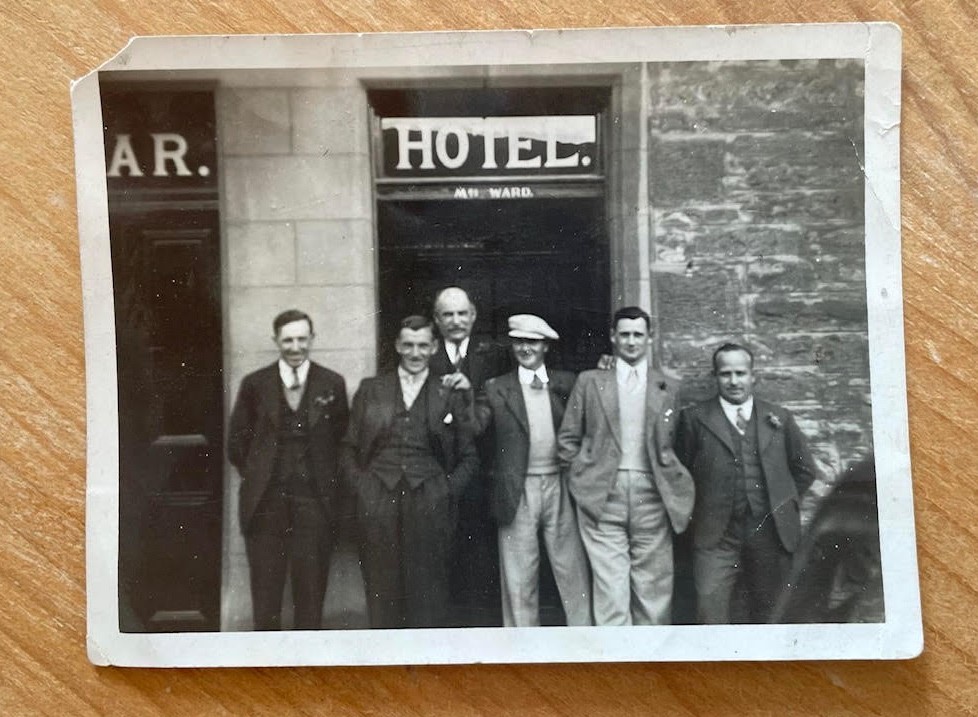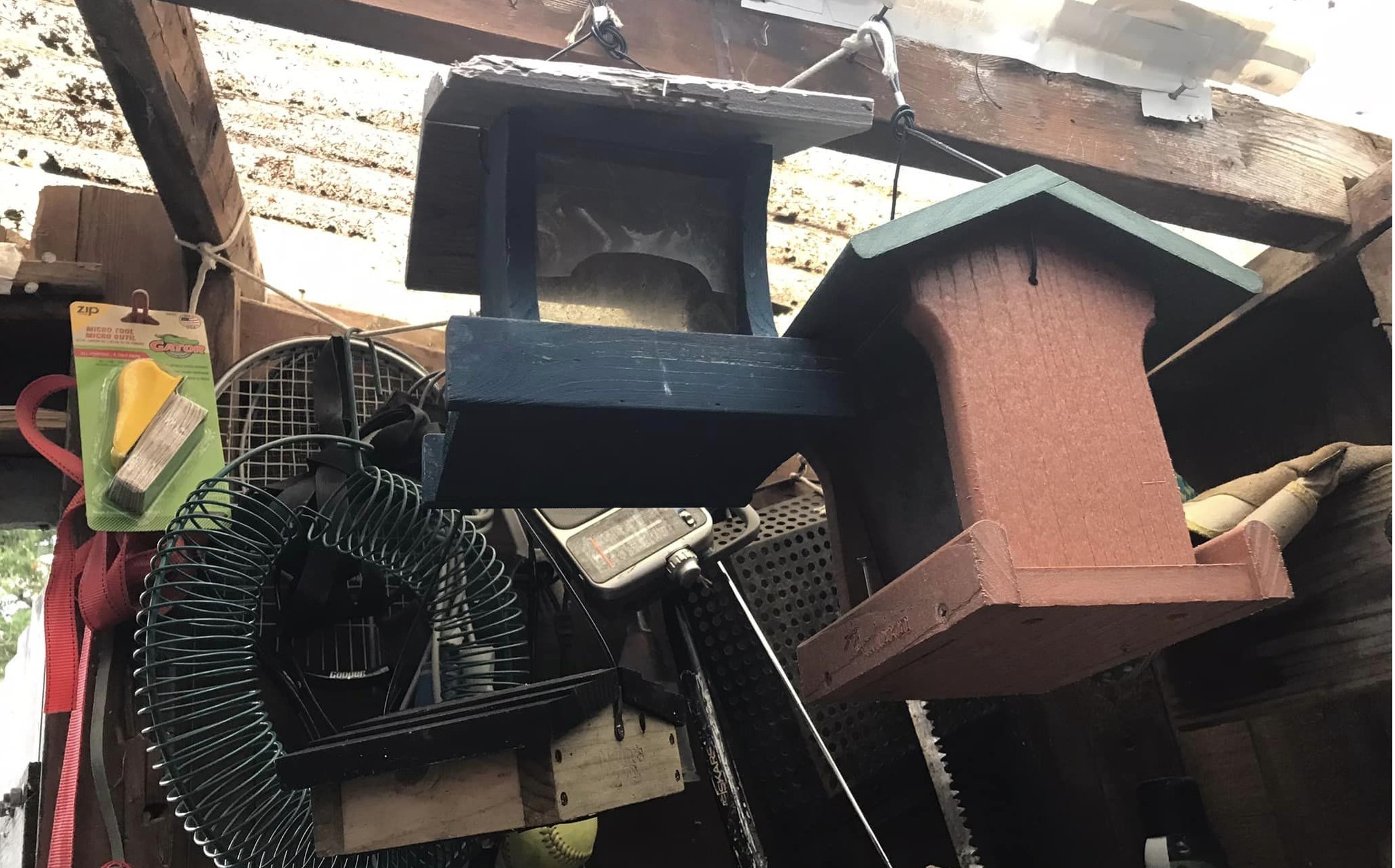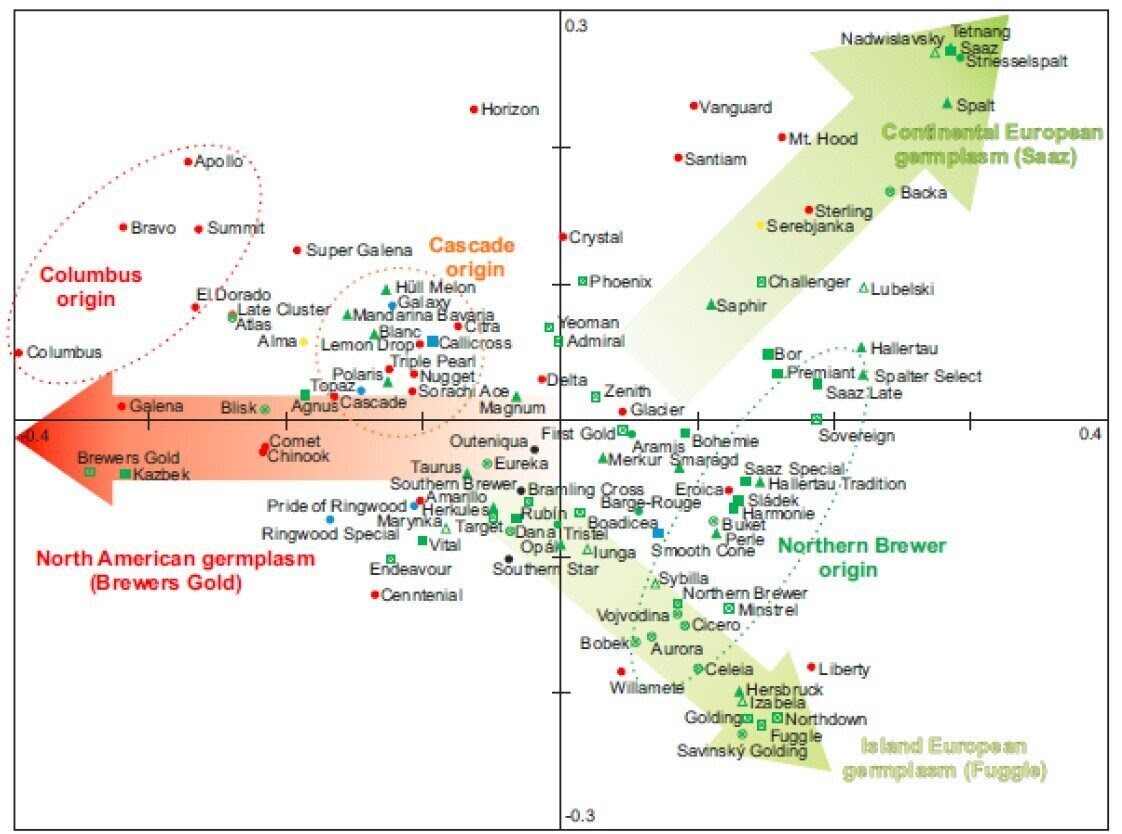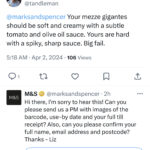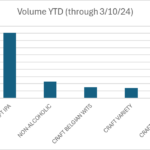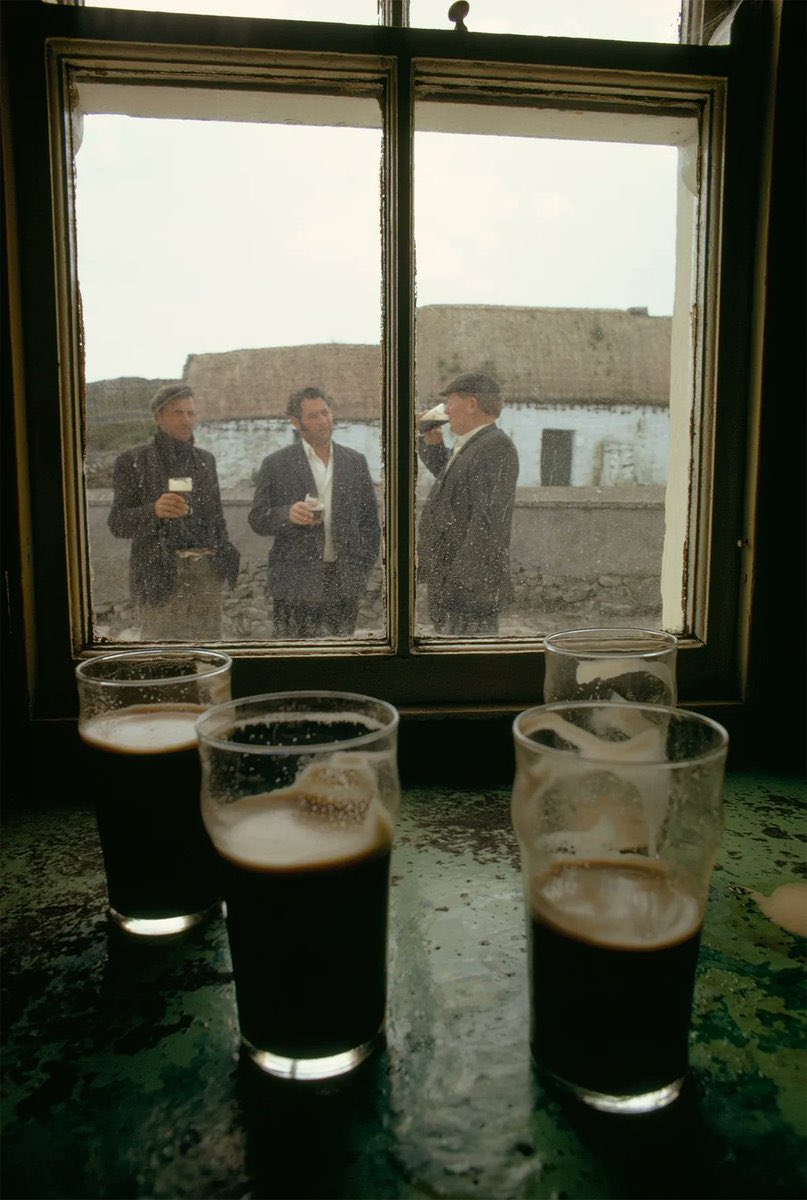 Victoria Day weekend is here. Err… I mean… VICTORIA DAY IS HERE!!! That’s better. It’s gonna get boozy. Break out the two-fours. No, not those ones. We were thinking of a couple of nights in nearby Montreal but the hotels weren’t cheap so now it’s going to be all about what’s within an hour’s drive. HMVR is pissed – won’t even look at me now. Back solidly turned. Shunned. Wow. Seriously, wow. Also wow in an entirely different way was a comment left by Maureen Ogle at the foot of last week’s update:
Victoria Day weekend is here. Err… I mean… VICTORIA DAY IS HERE!!! That’s better. It’s gonna get boozy. Break out the two-fours. No, not those ones. We were thinking of a couple of nights in nearby Montreal but the hotels weren’t cheap so now it’s going to be all about what’s within an hour’s drive. HMVR is pissed – won’t even look at me now. Back solidly turned. Shunned. Wow. Seriously, wow. Also wow in an entirely different way was a comment left by Maureen Ogle at the foot of last week’s update:
…thanks for the weekly dose of thoughtful snark. So many years of pleasure….
Fabulous. What could be better than when someone you admire provides you with the obvious name of the anthology for my top 1001 of these here blog posts from the last two decades – Thoughtful Snark. I will get right on that.
What’s been going on? Well, for one thing, a trio of the old guard of beer writing each shared their thoughts one way or another on the state of beer writing… and… it’s apparently not entirely good – but also not entirely bad. First, we have Evan Rail‘s thoughts on the state of beer writing:
…we have a new opportunity to focus on truly great writing: not getting there first, so much as covering the subject beautifully; not breaking news (though of course that can be important, too), so much as understanding and explaining its nuances; not reporting on every new beer or brewery that opens (an impossibility, given our current numbers), but writing more selectively about the ones that truly matter.
Then, we have Jeff at Beervana and his piece “Is Beer Less Interesting Or Am I?” which builds on the passage above:
I relate strongly to the idea that it’s harder to find anything new in beer, and that so much seems repetitious. (Let’s not get into the way beer media now seems to be infected with listicles, poor explainers, or pieces with titles like, “The Best ______ According to These Experts.”) Evan takes the point of view of a writer who has been covering beer for a quarter century, and as a fellow old I identify with it. But as an old I often find myself coming up short and asking: is the beer world really less interesting, or am I?
And finally we have Pete Brown who shared a few observations on, first, a beer junket to Spain and, then, a recent piece he wrote on the succession plan at BrewDog*:
Read this! Claiming it as “exclusive” is hilarious given I was on the same press trip, along with journos from the S*n and the Daily Heil, and some “influencers”. But at the brewery, this guy was the only one apart from me who was actually taking notes. Nice bloke, good journo.
and:
…commenting can be tricky. My brief was for an over-arching piece on the industry impact since 2007. If I’d just focused in on actions towards people in the business it would have been rejected. I tried to get the balance right and hope it doesn’t trivialise.
They, each in their turn, hit on various degrees of hope and despair and reality. But together they sort of expose the nature of the writing gig. Not everyone is taking notes, not every idea is interesting and not every page is beautiful. The same stark facts would face a sports, pop music or political writer too. I don’t think it is naval gazing either. If we consumers of the writing, if we readers are to value the effect of a story it is good to know that the writers are thinking about what they are doing, if the brief is a constraint – and certainly if they have just been hanging on at the edge of a junket, not bothering to even take notes.
So let’s see who’s done the best at that this week! I really like Jess’s piece at B+B on the particulars she loves in a pub as she rediscovered on a recent say out:
The crawl took us to three of the four pubs in St Werburghs: The Farm, The Miners’s Arms and The Duke of York. All of them have hippy vibes of varying degrees and make me feel nostalgic for her early drinking days – while leaving Ray a little on edge. He’s such a clean boy! The Farm has an enormous beer garden and several of my drinking companions told me it was more of a family pub than an alternative one these days, especially on Sundays. Last time Ray and I visited someone was trying to persuade the bar staff to give them the beer slops from the drip trays, allegedly to keep slugs off their plants in their allotment.
Hippies and slugs and slops. Excellent. Like what you like. And that photo of the skittles alley! As I’ve mentioned about a billion times, we could also do with a similar bit of honesty about value like we see a bit more these days in wine writing like this about the next opportunity to buy Bordeaux futures:
…right now – today – 2023 Angélus has been released at a price that comes in at more than the 2020, 2019, 2018, 2016 and 2015 vintages, all of which have some very punchy reviews and, moreover, are the finished product. You can buy a case of wine rather than title to nine litres of wine sitting in a barrel in St Emilion. Quite simply: there is zero point in buying it. Even if your name is Mr Angélus and your first born is a 2023: in this instance you can just stick £3,120 in the bank for a couple of years, get 5%, and buy the same wine, in bottle and in the UK, for the same or less money. Again: this is not rocket science or cutting edge economic analysis. It’s just obvious.
Mr. B. himself in Just Drinks broke out the honesty in his thoughts on the state of US craft beer, pointing a very particularly pointy finger in one particular direction:
This ‘haze craze,’ as it’s become known, led to several market shifts in North America, including the one most cited by craft brewers themselves: an overabundance of beers of very similar, sometimes almost interchangeable, character and flavour. As one veteran brewer who asked to remain anonymous put it: “There are only so many ways you can make a lasagna and it’s the same for hazy IPAs. That’s why so many of them taste the same.”
And, speaking of innovations becoming stagnation, over at The Gulp Katie Mather wrote about A.I. and her doubts:
I doubt I’ll ever be convinced of its merit in the fields of creative writing, painting, drawing, poetry, and music. In my opinion, it should be used as a powertool. It makes boring, labour-intensive jobs easier, in order to enable the creative and skilled work to be carried out by people who have the talent to do so. We are all good at different things. AI Art is not a leveller, it is a thief.
Boom! Plus it’s, you know, pretty shitty.** I mention this in particular given the news that one western Canadian brewery has made an all A.I. beer:
Amber Waves of Grain, released in February by Grain Bin Brewing Company, is an amber ale in which everything — the name, the price, the packaging and the recipe — was decided by OpenAI’s Chat GPT, an artificial intelligence tool trained to mimic human responses. “We decided to just be as hands-off as possible, to see what the limitations were and what the actual final product would be if we relied solely on artificial intelligence,” said Dalen Landis, a co-owner of the brewery in Grande Prairie, Alta., about 450 kilometres northwest of Edmonton. In an interview with CBC News, Landis said the beer is meant to be a conversation piece. He said it also raises a moral dilemma particularly with the packaging generated from sources across the internet.
While it was a bit of an exploration, maybe performance art, the whole thing reminds me a lot of the glory days of this here blog when I was interviewed about things, especially the time I was asked by The New York Times about what was called Open Source Beer back in 2005. It was sort of a manual form of artificial intelligence as I recall. Made no sense. Beer isn’t that hard, is it?
But maybe it is. In Pellicle this week Laura Hadland writes about the disruptive force that Anspach and Hobday have released on the unsuspecting population of London:
Jack and Paul are happy to admit the pervasive influence of the global brewing giant on their work, and it’s hard to overstate the influence of the shadow that St James’s Gate throws over the entire brewing world, especially when it comes to nitro porter. When attempting to take on Guinness, it’s also worth pointing out the scale of the challenge. 350,000 litres of London Black are now being brewed each year, with further expansion planned. From a standing start, that’s an impressive achievement in less than three years. But if litres were metres, then Guinness’ UK on-trade volume is the height of The Shard with London Black just a Labrador standing dolefully beside it. At the current rate of expansion, Anspach and Hobday aren’t going to be treading on Guinness’ heels any time soon.
Staying in that fair city, in his latest edition of London Beer City, Will Hawkes shared a lovely bit of observation and, yes, honesty that makes total sense as far as I’m concerned:
A dog is sniffing my leg. I’m standing at the bar at the Parakeet, a gastropub in Kentish Town, in brief beer-related discussion with the bar-lady, and I can feel its cold nose through my trouser leg. I turn and look. It’s an XL Bully. I didn’t intend to turn this edition of London Beer City into an XL Bully Special, but here we are. Honestly, there are loads of them about. I see them in the street. I avoid them in the park. I take an involuntary leap back when one sniffs my leg in the pub.
Third London tidbit: the beer spend in the city for the upcoming Euro 2024 will be £120 according to El Predicto… or something sorta like that.
Gary posted another interesting slice of 20th century brewing history with a study of the strength of Rainier Old Stock Ale – 5%? 7.5%? 9%? What ever it is… PEP UP!
The King and Queen have announced their Royal Warrants including those for the clink and the drink. These things are not part of the Canadian Royal fam set up but, still, gonna be looking for that little crest on my box of Weetabix. First beer to get the sticker on the label?
In 2014, the Prince of Wales also gave permission for the Royal Warrant to be used on bottles of Shepherd Neame’s Spitfire Amber Ale, first brewed in 1990 to commemorate the Battle of Britain. “We have a long association with the Royal Family, and are incredibly proud to be among the first UK businesses to be awarded a Royal Warrant by His Majesty King Charles III,” said Shepherd Neame chief executive Jonathan Neame.
Probably the only warrant you want being issued with your name on it.
Was that enough snark? I don’t really think so. That’s a pretty positive and mild one this week. Oh dear. I will have to do better next week!
And with that… once again… we roll the credits… well, the credits, the stats the recommends and the footnotes and the many ways to find good reading about beer and similar stuff via any number of social media and other forms of comms connections.*** Want to keep up with the news before next Thursday? Check out Boak and Bailey every Saturday and Stan back each Monday. Elsewhere go look at then listen to Lew’s podcast. And get your emailed issue of Episodes of my Pub Life by this year’s model citizen David Jesudason on the odd Fridays. And Phil Mellows is at the BritishBeerBreaks. Once a month, Will Hawkes issues his London Beer City newsletter and do sign up for Katie’s now revitalised and wonderful newsletter, The Gulp, too. Ben’s Beer and Badword is back with all the sweary Mary he can think of! And check out the Atlantic Canada Beer Blog‘s weekly roundup. There is new reading at The Glass which is going back to being a blog in this weeks best medium as message news. Any more? Yes! Check to see the highly recommended Beer Ladies Podcast. That’s quite good. And the BOAS podcast for the bro-ly. And the long standing Beervana podcast …except they have now stood down. Plus We Are Beer People. The Boys Are From Märzen podcast appears suspended as does BeerEdge, too. But not Ontario’s own A Quick Beer. There is more from DaftAboutCraft‘s podcast, too. All About Beer has introduced a few podcasts… but some may be losing steam. And there’s also The Perfect Pour. Plus follow the venerable Full Pint podcast. And the Craft Beer Channel on Youtube. The Moon Under Water… is gone which is not surprising as the ask was $10 a month. Pete Brown’s costs a fifth of that but is writing for 47 readers over there. There was also the Beer O’clock Show but that was gone after a ten year run but returned renewed and here is the link! Errr… nope, it is gone again.
*To the greater point being made, get the backstory right like the Daily Mail did: “Mr Watt comes from a family of fishermen and used to help his father on his fishing boat in the North Sea. On his LinkedIn profile he claims to be a ‘fully qualified deep sea captain’. He graduated from Edinburgh University with a degree in law and economics. After landing a job as a trainee solicitor he quit after two weeks – branding ‘conforming’ as ‘painful at best – and, three years later, started BrewDog with Mr Dickie.“
*And a bonus first footnote observation from B+B’s own gossipy (I said) Footnotes on the connection between putting in the hours and building trust: “We’re Patreons of Pete Brown which means every now and then we get an email with some behind the scenes info. He’s had a busy week covering various bits of brewing news, including the Burton unions story. On that, he reveals that he had inside info on the deal. Which makes us think that when he says in his Pellicle piece about Worthington White Shield “Rumours are now circulating that a deal may be struck…” he knows (a) that this is definitely the case; and (b) exactly who is likely to be brewing White Shield. Again, we wonder if it might be Thornbridge. The brewery wot does heritage would be an interesting niche for them.“
**From the NYT: “It’s a little hard to believe that just over a year ago, a group of leading researchers asked for a six-month pause in the development of larger systems of artificial intelligence, fearing that the systems would become too powerful. “Should we risk loss of control of our civilization?” they asked. There was no pause. But now, a year later, the question isn’t really whether A.I. is too smart and will take over the world. It’s whether A.I. is too stupid and unreliable to be useful.“
***This week’s update on my own emotional rankings? Facebook still in first (given especially as it is focused on my 300 closest friends and family) then we have BlueSky (bloop! 127) rising up to maybe… probably… likely pass Mastodon (slumoing to 913) in value… then the seemingly doomed trashy Twex (up t0 4,472) hovering somewhere above or around my largely ignored Instagram (162), with sorta unexpectly crap Threads (43) and not at all unexpectedly bad Substack Notes (1) really dragging up the rear – and that deservedly dormant Patreon presence of mine just sitting there. Fear not!




